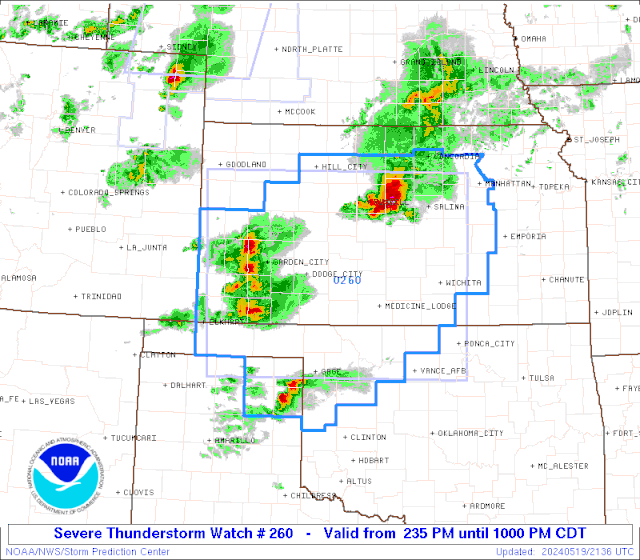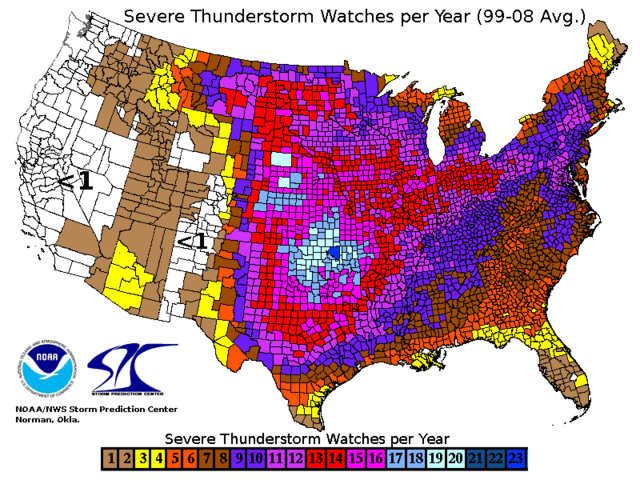








Severe thunderstorm watches are critical alerts issued by the National Weather Service (NWS) when conditions are favorable for severe thunderstorms in a specific area. Understanding these watches can be the difference between preparation and peril.
What Is a Severe Thunderstorm Watch?
A severe thunderstorm watch is issued when meteorological conditions indicate that severe thunderstorms are possible in a designated area. It serves as a proactive warning, allowing individuals and communities to prepare for potentially hazardous weather. The watch is typically issued several hours in advance of the expected onset of storms.
Key Characteristics of a Severe Thunderstorm Watch:
- Duration: Watches can last for several hours, usually up to six hours or more, depending on the weather patterns.
- Criteria: A watch is issued when there is a possibility of severe weather, which includes thunderstorms capable of producing hail of 1 inch or larger, winds of 58 mph or greater, and even tornadoes.
- Geographic Scope: Watches cover a broad area, often spanning multiple counties or even states.
The Science Behind Thunderstorm Watches
Understanding the meteorological science that leads to a severe thunderstorm watch is crucial. Meteorologists analyze a variety of factors, including:
- Atmospheric Instability: Warm, moist air rising into cooler air aloft creates instability, which can lead to thunderstorms.
- Wind Shear: Variations in wind speed and direction at different altitudes can enhance storm development and organization.
- Moisture Availability: High humidity levels are essential for the formation of thunderstorms, as they provide the necessary fuel for storm development.
The Role of Doppler Radar
Doppler radar technology plays a pivotal role in monitoring and predicting severe thunderstorms. It allows meteorologists to detect:
- Precipitation Types: Differentiating between rain, hail, and other forms of precipitation.
- Storm Rotation: Identifying rotating storms that may produce tornadoes or severe winds.
- Real-Time Updates: Providing essential information to update watches and warnings as conditions change.
Impacts of Severe Thunderstorm Watches
The implications of a severe thunderstorm watch extend beyond the immediate risk of storms. Communities must be aware of the potential impacts, including:
- Infrastructure Damage: High winds and hail can cause significant damage to buildings, vehicles, and crops.
- Power Outages: Storms can lead to downed power lines, causing widespread outages.
- Travel Hazards: Heavy rain can reduce visibility and create dangerous driving conditions, leading to potential accidents.
Historical Context: Lessons from the Past
Reflecting on previous severe thunderstorm events can provide valuable insights. For example, the infamous 2011 Joplin tornado, while classified as a tornado event, was preceded by severe thunderstorm watches that highlighted the importance of preparedness. This tragedy underscored the need for communities to take watches seriously and to have emergency plans in place.
Preparation Strategies for Severe Thunderstorm Watches
Being prepared is essential during a severe thunderstorm watch. Here are several strategies individuals and communities can implement:
- Stay Informed: Monitor local weather reports and official sources like the NWS for updates and warnings.
- Emergency Kits: Prepare a kit that includes essentials like water, non-perishable food, first-aid supplies, flashlights, and batteries.
- Family Communication Plans: Establish a plan for family members to stay connected during severe weather events.
Community Preparedness Initiatives
Local governments and organizations can play a vital role in educating residents about severe thunderstorm watches. Initiatives may include:
- Public Awareness Campaigns: Distributing information through local media and community events.
- Emergency Drills: Conducting drills to ensure residents know how to respond when a watch is issued.
- Collaboration with Local Organizations: Partnering with schools, businesses, and non-profits to spread awareness and resources.
The Future of Weather Alerts
As technology continues to evolve, so does the way we receive weather alerts. Innovations in communication, such as mobile alerts and social media updates, enhance public awareness and response times.
The Role of Artificial Intelligence
AI and machine learning are becoming increasingly significant in weather forecasting. By analyzing vast amounts of data, AI can:
- Improve Accuracy: Enhance the precision of forecasts and the timing of watches and warnings.
- Predict Localized Storms: Provide more targeted alerts based on localized weather patterns.
Conclusion: The Importance of Vigilance
A severe thunderstorm watch is a crucial tool in meteorology, providing an early warning that can save lives and protect property. By understanding the conditions that lead to these watches and implementing effective preparation strategies, individuals and communities can mitigate the risks associated with severe thunderstorms. As we advance in technology and awareness, the importance of staying informed and prepared remains paramount in the face of nature's unpredictability.
